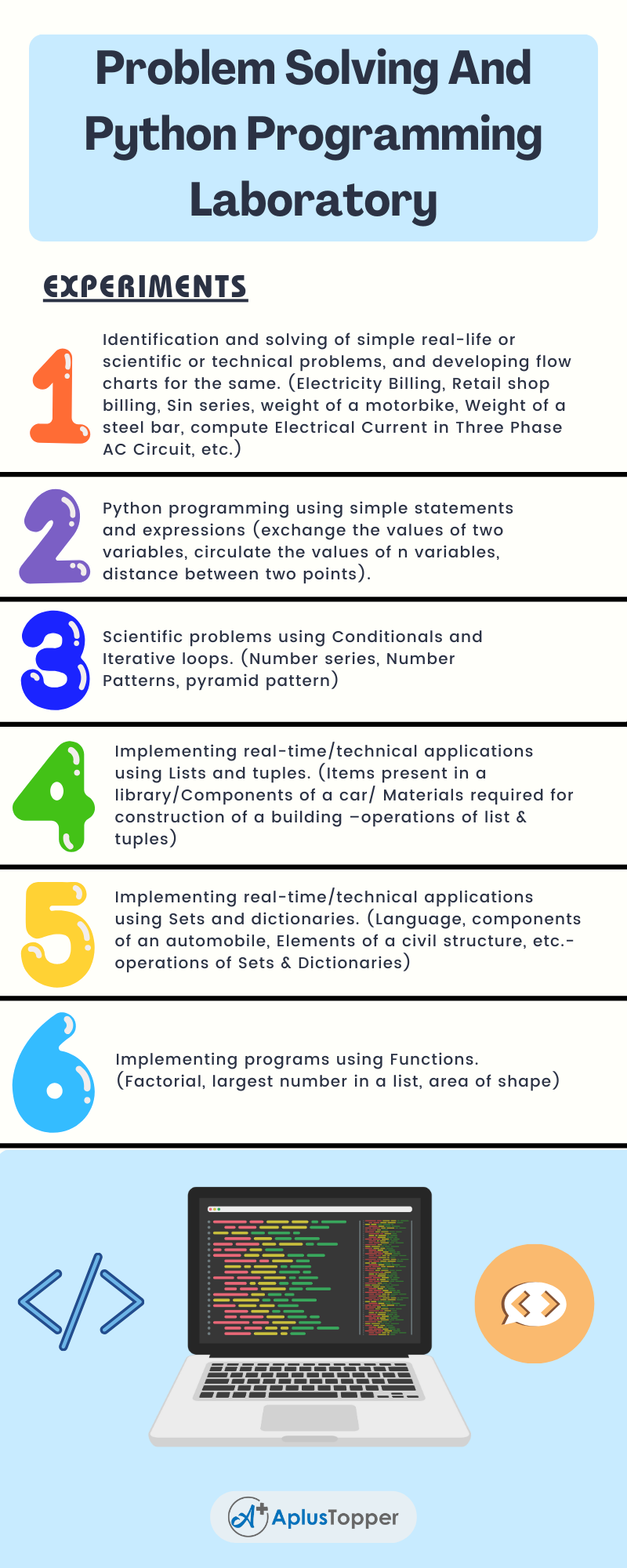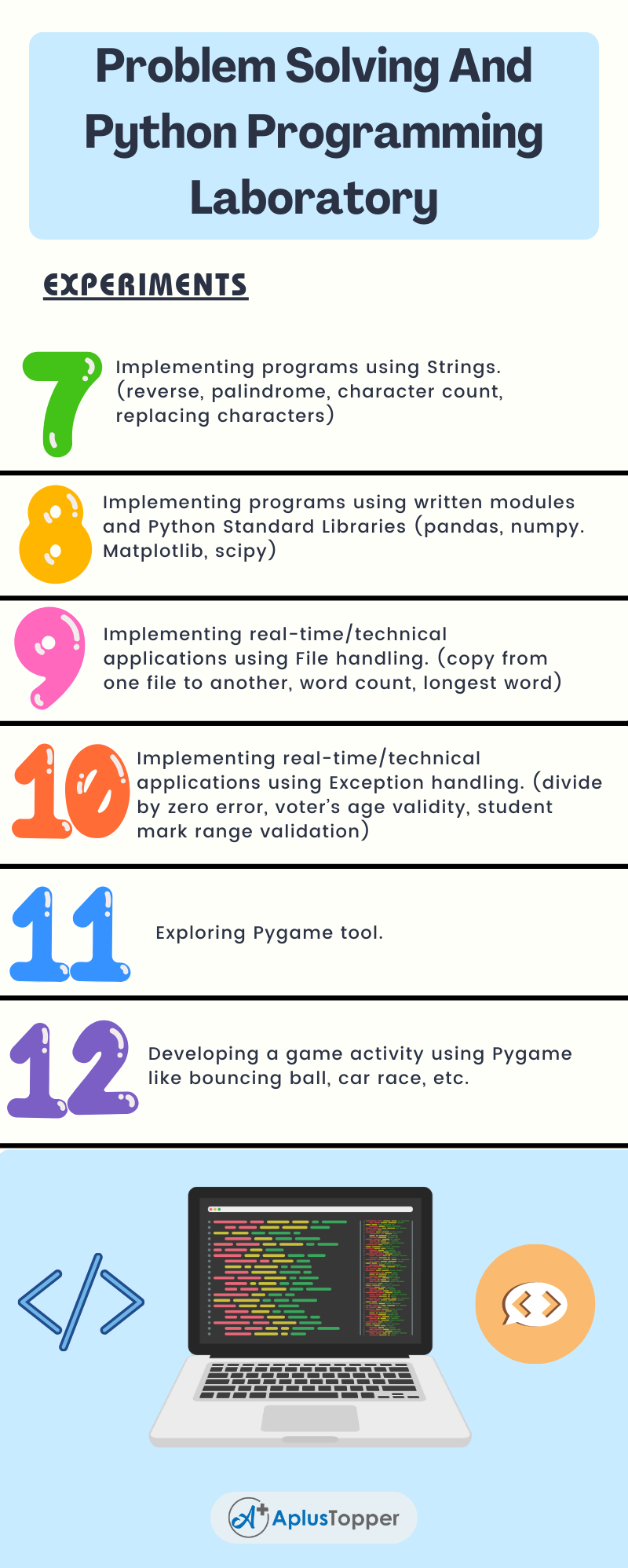Anna University, Subject code – GE3171, deals with the B.E civil Engineering Semester – I Problem Solving And Python Programming Laboratory Syllabus regulation 2021 relating to affiliated institutions. From here, Students can get assistance in preparing notes to excel in academic performance.
We include every topic of the Problem Solving And Python Programming Laboratory Syllabus, to understand the subject very well. It will help you to improve your idea of syllabus of GE3171 – Problem Solving And Python Programming Laboratory Syllabus on your finger tips to go ahead in a clear path of preparation. In this following article Problem Solving And Python Programming Laboratory Syllabus, will help you, Hope you share with your friends.
If you want to know more about the syllabus of B.E Civil Engineering connected to an affiliated institution’s under four-year undergraduate degree programme. We provide you with a detailed Year-wise, semester-wise, and Subject-wise syllabus in the following link B.E Civil Engineering Syllabus Anna University, Regulation 2021.
Aim Of Concept:
- To understand the problem-solving approaches.
- To learn the basic programming constructs in Python.
- To practice various computing strategies for Python-based solutions to real-world problems.
- To use Python data structures – lists, tuples, dictionaries.
- To do input/output with files in Python.
GE3171 – Problem Solving And Python Programming Laboratory Syllabus
Experiments:
Note: The examples suggested in each experiment are only indicative. The lab instructor is expected to design other problems on similar lines. The Examination shall not be restricted to the sample experiments listed here.

- Identification and solving of simple real-life or scientific or technical problems, and developing flow charts for the same. (Electricity Billing, Retail shop billing, Sin series, weight of a motorbike, Weight of a steel bar, compute Electrical Current in Three Phase AC Circuit, etc.)
- Python programming using simple statements and expressions (exchange the values of two variables, circulate the values of n variables, distance between two points).
- Scientific problems using Conditionals and Iterative loops. (Number series, Number Patterns, pyramid pattern)
- Implementing real-time/technical applications using Lists and tuples. (Items present in a library/Components of a car/ Materials required for construction of a building –operations of list & tuples)
- Implementing real-time/technical applications using Sets and dictionaries. (Language, components of an automobile, Elements of a civil structure, etc.- operations of Sets & Dictionaries)
- Implementing programs using Functions. (Factorial, largest number in a list, area of shape)
- Implementing programs using Strings. (reverse, palindrome, character count, replacing characters)
- Implementing programs using written modules and Python Standard Libraries (pandas, numpy. Matplotlib, scipy)
- Implementing real-time/technical applications using File handling. (copy from one file to another, word count, longest word)
- Implementing real-time/technical applications using Exception handling. (divide by zero error, voter’s age validity, student mark range validation)
- Exploring Pygame tool.
- Developing a game activity using Pygame like bouncing ball, car race, etc.

Text Books:
- Allen B. Downey, “Think Python: How to Think like a Computer Scientist”, 2nd Edition, O’Reilly Publishers, 2016.
- Karl Beecher, “Computational Thinking: A Beginner’s Guide to Problem-Solving and Programming”, 1st Edition, BCS Learning & Development Limited, 2017.
References:
- Paul Deitel and Harvey Deitel, “Python for Programmers”, Pearson Education, 1st Edition, 2021.
- G Venkatesh and Madhavan Mukund, “Computational Thinking: A Primer for Programmers and Data Scientists”, 1st Edition, Notion Press, 2021.
- John V Guttag, “Introduction to Computation and Programming Using Python: With Applications to Computational Modeling and Understanding Data‘‘, Third Edition, MIT Press, 2021
- Eric Matthes, “Python Crash Course, A Hands-on Project-Based Introduction to Programming”, 2nd Edition, No Starch Press, 2019.
- https://www.python.org/
- Martin C. Brown, “Python: The Complete Reference”, 4th Edition, Mc-Graw Hill, 2018.
Related Posts Of Semester – I:
- CY3151 – Engineering Chemistry
- GE3151 – Problem Solving and Python Programming
- GE3152 – தமிழர் மரபு / Heritage of Tamils
